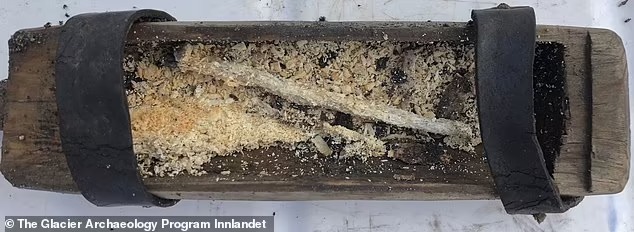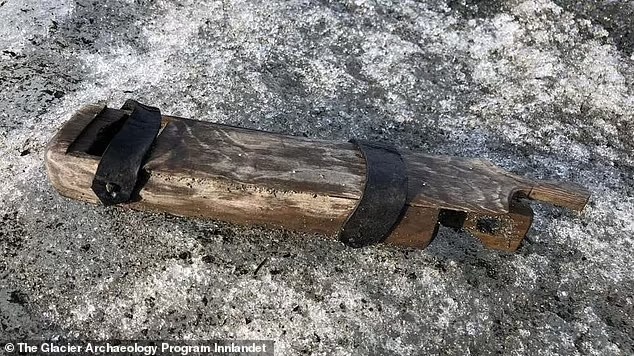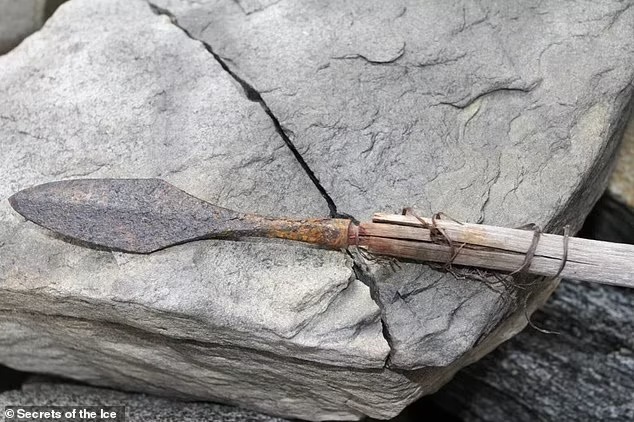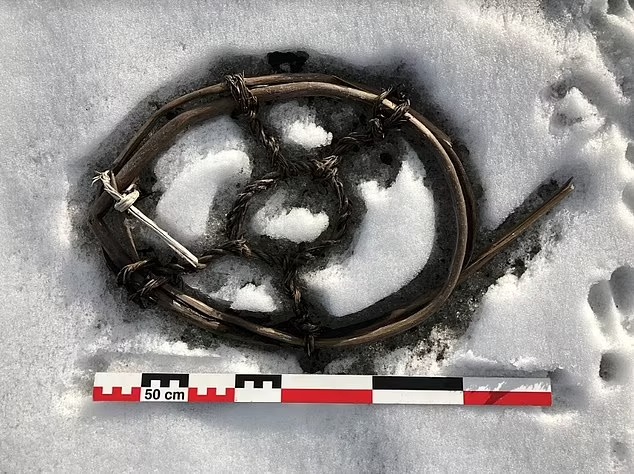The glacier melts to reveal a “treasure” that has been buried for 500 years, and when opened, it has a strong aroma but contains a harsh reality.
In June 2021, archaeologists officially announced the discovery of a wooden box dating back more than 500 years in a melting glacier in Norway. This box is in near-perfect condition, made of pine wood and fastened by two leather straps, inside the box is the remains of a beeswax candle, which is used by the Vikings (people living in the Nordic region).
First discovered in 2019, the team suggest that the box was used to store the candles that the Vikings used to light the road from the main farm to the summer farm – the grasslands they used to frequent. grazing cattle in the summer.

This box is in near-perfect condition, made of pine wood and fastened by two leather straps, inside the box is the remains of a beeswax candle.
When it was first discovered, the team thought it was just a travel box, but upon further analysis, they discovered its actual value.
Page The History Blog news: “This box has radiocarbon dating (a method of determining the age of artifacts) between 1475-1635 AD, which is 400-500 years old. The object inside has been analyzed. at the Oslo Museum of Cultural History, and to my surprise, inside the box contained a sweetly scented beeswax.”
This is considered a “treasure” for scientists’ research on human life in a historical period.

Since 2011, the Lendbreen Glacier in Norway has been a destination of interest to archaeologists. But it stems from a harsh reality that is caused by… climate change.
The melting of glaciers due to climate change has created a valuable archaeological site in this country, which is known as a route used by the Vikings for thousands of years, so it is not difficult to find. find antiques of high cultural value.
Since the searches began, the Lendbreen Glacier has yielded more than 6,000 artifacts. In November 2020, archaeological teams unearthed nearly 70 arrow shafts, shoes, cloth and reindeer bones on the slopes of a mountain in Jotunheimen, about 386km from Oslo.


In November 2020, archaeological teams unearthed nearly 70 arrow shafts, along with shoes, textiles and reindeer bones on a mountainside.
Based on radiocarbon dating, the oldest arrows date to around 4100 BC, the closest arrows date to about 1300 AD. Researchers have collected a mass of more than 100 artifacts at the site including horseshoes, wooden whisks, walking sticks, wooden needles, gloves and a small iron knife.
Although the melting of glaciers will help uncover valuable artifacts, it also creates many difficulties for archaeologists because the ice is the material that keeps the artifacts preserved for a long time. .
In an interview with the media in October 2020, archaeologist Regula Gubler once said: “It’s a very short period of time. Within 20 years, these artifacts will disappear with the melting of the glaciers. This will worry researchers.”
She further explains that materials such as leather, wood, birch bark and textiles are subject to wear and tear, and that ice is the best material to preserve them.
How long is the Viking Age in history?
In European history, the Viking age lasted from about 700 to 1100 AD. During this period, many Vikings chose to leave their homeland of Scandinavia to sail to other countries such as England and Ireland.
When the British people first saw the Viking boats, they came to greet their new friends. However, known for their belligerent nature, the Vikings fought with the natives, stealing things from churches and burning people’s homes. The British called these invaders “Danish”, but in fact the Vikings also came from Norway and Sweden.
The name Viking comes from the Old Norse language and means “pirate”. The first Viking raid fell around AD 787 and is recorded in the Anglo-Saxon Chronicle. This was also the beginning of a fierce struggle between the Anglo-Saxons and the Vikings.
Source: Daily Mail
at Blogtuan.info – Source: Kenh14.Vn – Read the original article here



